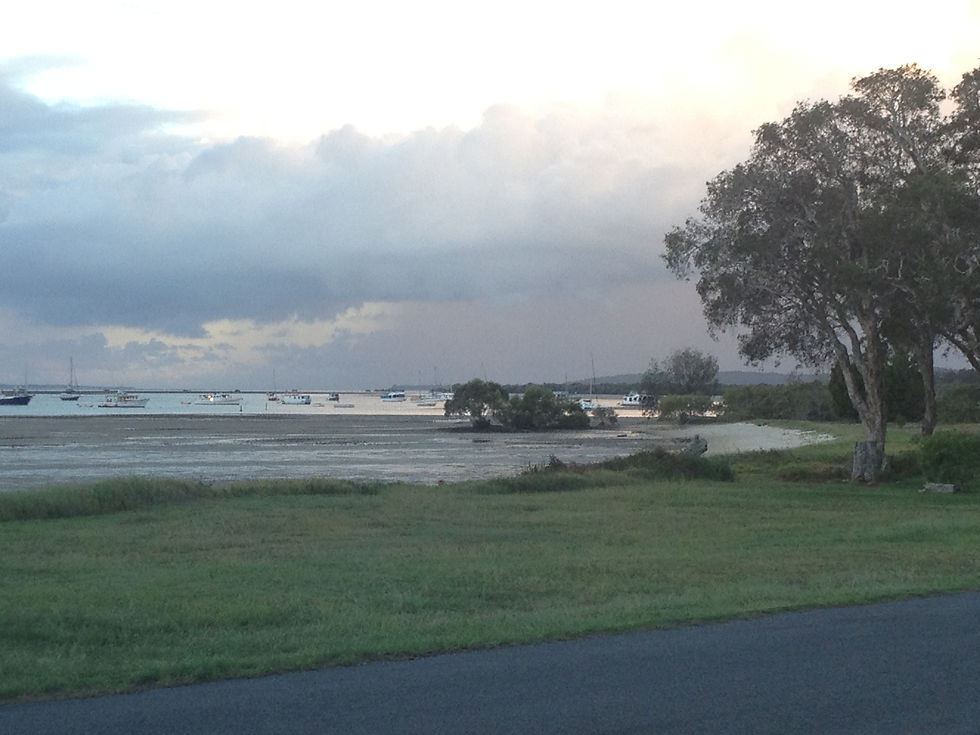What I think is useful for a PhD/ECR – Part 1
- April

- Feb 9, 2018
- 3 min read
Updated: Feb 16, 2018
In what may have been a misguided (but happily received) vote of confidence, I was invited to give a talk to the UQ Biology postgraduate’s annual conference on Stradbroke Island this week. They asked me to cover useful things for a PhD student to know, such as applying for funding and the like.
When I asked the Green Fire Science lab group postgrads what they would find useful or interesting to hear about, I was told “April, your name keeps getting mentioned for all the wrong reasons. Why don’t you talk about that?”
Well, good to cover topics you’re most familiar with I guess.
Here is a brief summary of some of what I covered – much of it is Australia-centric but may be useful elsewhere.
Research with impact
Sources of academic funding – both traditional (e.g. Australian Research Council, universities) and non-traditional (national and state government research granting bodies, NGOs) increasingly want to fund projects that can clearly benefit the Australian community. For example, 15% of the marking for a DECRA is for “benefit”. This has been pushed for from the top: our deputy prime minister has been reported to want funds to go to projects that “pass the pub test”*.
NGOs that rely on donations also need to show that they’re funding projects that have real impact. My academic career to date has been a mix of government program and NGO funding (e.g. NCCARF, Regional NRM planning for climate change program, NESP Threatened Species Recovery Hub, Australian Conservation Foundation), which has dictated that my research focus on applied outcomes.
Take Home Message: Practice explaining in your abstracts, your talks and the introductions of your papers why your research is important. This will be good practice for writing those grant applications that become increasingly a part of academic life.

Involving stakeholders
I was really surprised to discover how many different organisations across Australia were really keen to source the distribution models I ran for Australian vertebrates during my first postdoc position, particularly for understanding the climate change impact and adaptation options for species in their region. One particularly great example is that the Queensland government used our models to rank properties across the state for climate resilience, and used this to direct funding to acquire properties for the National Reserve System.
[we covered this in our article in The Conversation in 2015]
In hindsight, it would have been better to scope for interest in the research products during their development, not just at the end.
Take Home Message: do some scoping for interest in your research outputs, particularly beyond academia. Try to facilitate the distribution of your outputs to the different organisations.
Co-development
I once thought that I had to squirrel away and produce some fantastic science, and then I could show the end users this fantastic science, and this would be a really useful way to develop products to help organisations with their climate change adaptation plans. It seems obvious in hindsight, but turns out the co-development of the project, from the initial questions, the process, and then refining the outcomes, is far more useful for end users, than that developed in isolation.
Take Home Message: to design your research outputs to have real-world impact, it is important to consult the stakeholders and end users early, and often.
Options for increasing exposure of your work
Non-academic outputs can help increase the exposure of your work, which can be useful to the end users, but can also help develop relationships and collaborations, which can lead to future funding opportunities. A few ideas for increasing the non-academic exposure of your work include:
• Fact sheet designed for specific stakeholders (e.g. 1 for land holders, 1 for government)
• Policy brief
• Make your data/ models/ maps/ outputs available and accessible
• Send your papers to anyone who might be interested – including outside academia
• Write for The Conversation, blogs, etc
• Talks to community groups
Take Home Message: there are many ways you can increase the exposure – and therefore impact – of your work. These can be implemented at many stages throughout the life of the project.
Ok that’s enough of my thoughts on research with impact, I’ll write the next post to cover the next lot of wisdom I inflicted upon the biology postgrads.

*I feel obliged to note that I don’t actually endorse many things he says or does, but used this to illustrate the funding environment we’re currently in.
PS Just saw a correspondence in Nature calling for more linking societial impact with scientific research and metrics: "Teach young scientists the importance of societal impact for research"





Great insights for PhD and early career researchers! Enhance your research skills at top PhD colleges in Jaipur and excel in your academic journey.